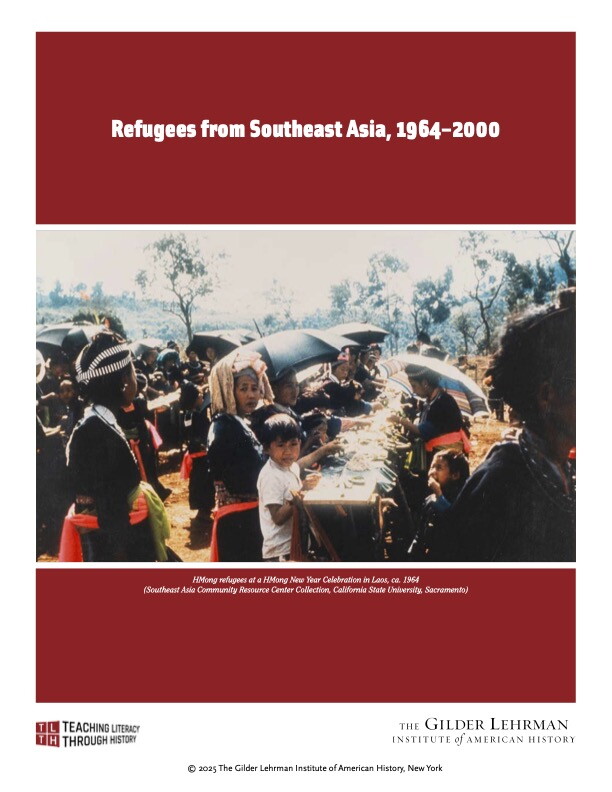Lesson by Jessica Lander
Essay by Khatharya Um, University of California, Berkeley
Grade Level: 7–12
Number of Class Periods: 5
Primary Era: 1945–present

Over the course of five lessons, students will learn about the experiences of Cambodian, Vietnamese, Laotian, and Hmong refugees who were resettled in the US between the 1970s and early 2000s. Students will explore articles, photographs, videos, and oral histories as well as a historical overview essay by a leading scholar.
Lesson Plan Author: Jessica Lander
Historical Background Essay by: Khatharya Um, University of California, Berkeley
CCSS.ELA-LITERACY.RH.6-8.1: Cite specific textual evidence to support analysis of primary and secondary sources.
CCSS.ELA-LITERACY.RH.6-8.6: Identify aspects of a text that reveal an author’s point of view or purpose (e.g., loaded language, inclusion or avoidance of particular facts).
CCSS.ELA-LITERACY.RH.9-10.2: Determine the central ideas or information of a primary or secondary source; provide an accurate summary of how key events or ideas develop over the course of the text.
CCSS.ELA-LITERACY.RH.9-10.4: Determine the meaning of words and phrases as they are used in a text, including vocabulary describing political, social, or economic aspects of history/social science.
CCSS.ELA-LITERACY.SL.9-10.1: Initiate and participate effectively in a range of collaborative discussions (one-on-one, in groups, and teacher-led) with diverse partners on grades 9-10 topics, texts, and issues, building on others’ ideas and expressing their own clearly and persuasively.
How do people become refugees? In what ways does that impact them, and how do they rebuild their lives?
How did refugees from Southeast Asia describe their identity?
What obstacles made life in the US challenging for refugees?
What opportunities in the US did Southeast Asian refugees create, and who and what supported them?
Warsan Shire, “Home,” 2011
“Route to a New Life,” Des Moines Register, October 13, 1988
“Pan Am Stewardesses Recall Last Flight out of Vietnam, 40 Years After Fall of Saigon,” April 29, 2015
“White HMong Women and Children Eating at HMong New Year Celebration in Laos,” by an unknown photographer, ca. 1964
“South Vietnamese refugees arriving at a camp at Eglin Air Force Base in Florida” (2 images) by photographer Frank Sikora for the Birmingham News, May 1975
“Two elderly Vietnamese women wearing head coverings outdoors at the Fort Indiantown Gap refugee camp” by photographer Charles Isaacs, 1975
“Vietnamese refugees at Fort Indiantown Gap, Pennsylvania,” by photographer Don Camp for The
Philadelphia Inquirer, 1975
“Children sitting in front of blackboard,” unknown photographer, ca. 1970-80
“To Make a Return” by Mai Der Vang, Journal of Southeast Asian American Education & Advancement 5 (2010)
Arn Chorn-Pond, “Music Saved My Life,” TEDxWarwick
Oral histories from the Vietnamese American Oral History Project (UC Irvine), Hmong Oral History Project (Concordia University St. Paul), and Southern Oral History Program Collection (University of North Carolina at Chapel Hill)
Thuy Phan, “Song Long: Three Decades of French/Vietnamese Cuisine,” Người Việt Daily News (Westminster, CA). September 14, 2015
“Kathy Crockett teaches ESL Class at Lowell High (Massachusetts),” by Michael Pigeon, photographer, February 14, 1988
“Song Long Restaurant during its grand opening in 1981,” April 25, 1981